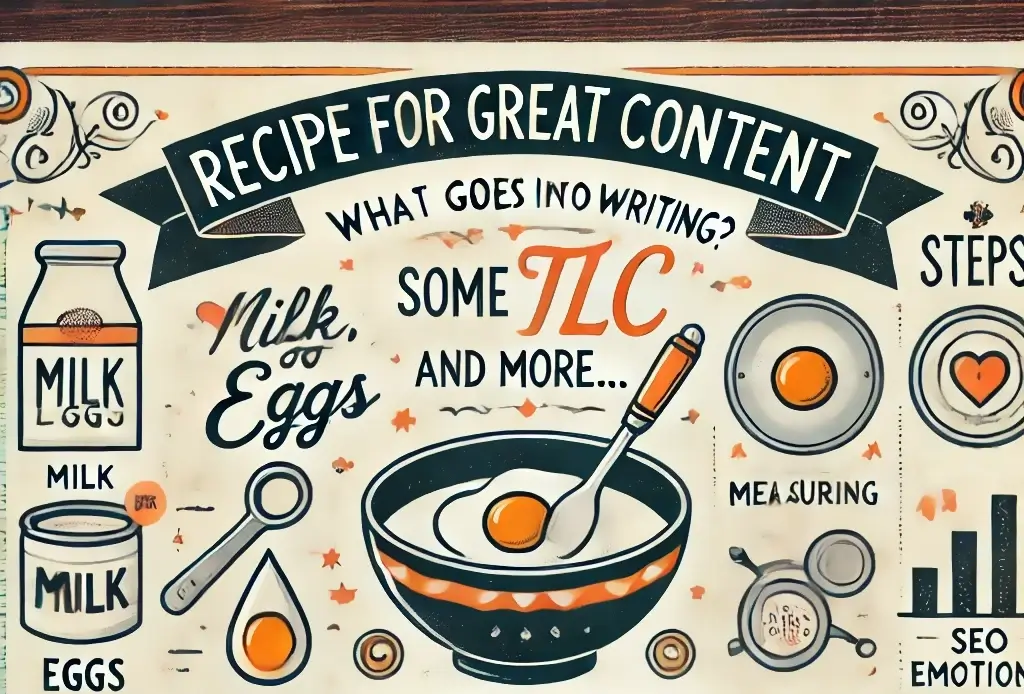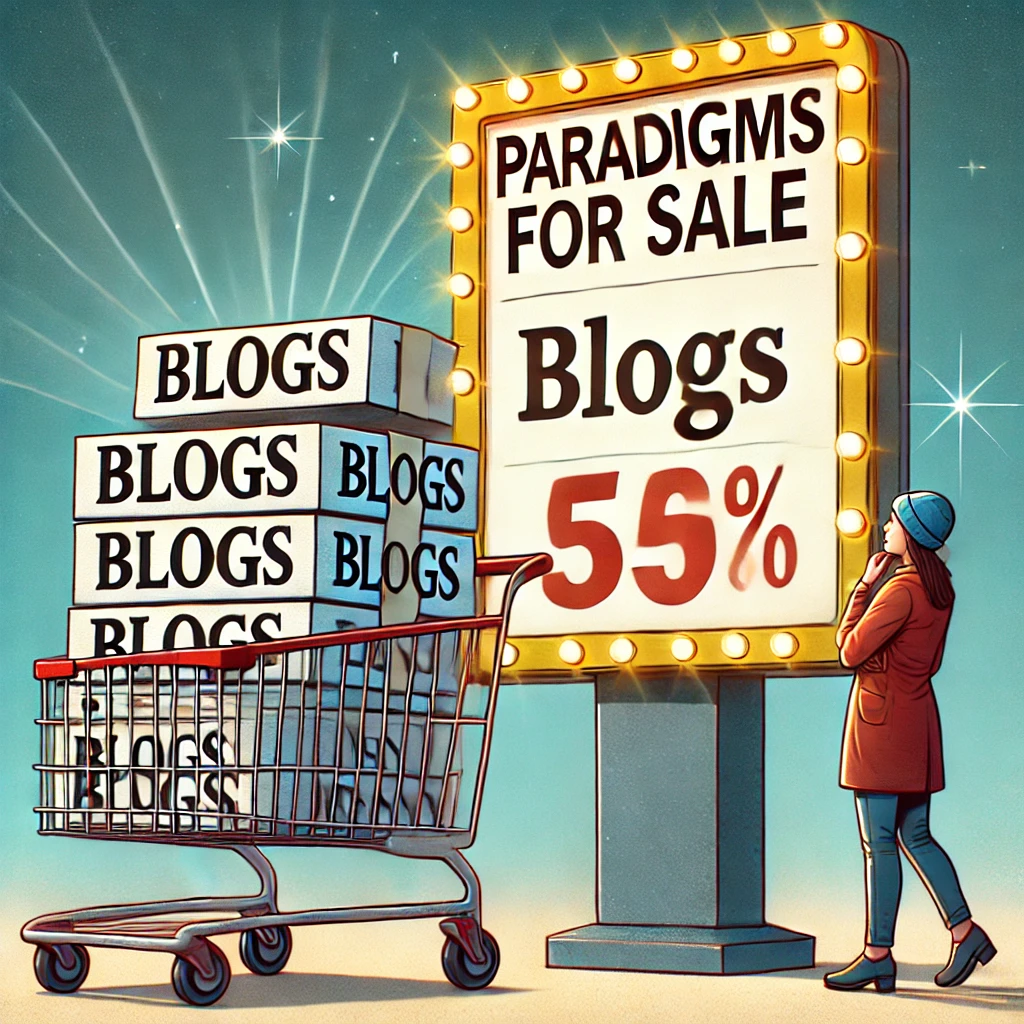Commodities have been on my mind as of late. I’m not talking about the “Trading Spaces” kind, but rather those that are mistaken for commodities when they’re actually not — especially services. This all came about when a client of mine requested that we chat about a new direction for his company’s blogs. We’d been focusing on some of the graphic design elements of the company’s service offering and hadn’t received much feedback as of late, so when I was contacted to discuss details, I got excited. Feedback and client involvement is a strong component in effective, targeted content.
When Price Dictates All
“Design itself is a commodity,” he starts off. “Anybody can go out and hire a graphic designer for $500 and they can get a great design back.” However, that’s not where the value lies, he goes on. The true value of the design is in the research that goes into it: ensuring it doesn’t just look good, but is actually effective in the marketplace.
I get a flashback of when we were looking for a logo redesign last year. We looked at many designs, and it took more than a month before we finally made a decision. The issue wasn’t that we didn’t like the designs — there were several I thought looked great. Rather, the problem was in not knowing which design would resonate with our target market. That was the key value missing in that situation, and not having some sort of market research involved made the whole process much more cumbersome.
The call ended on a high note and I convened with my team to implement the new direction. However, all of this got me thinking; how do the public, clients, and even other providers perceive the main service in our industry? Is writing a commodity? To know the answer, one has to understand the process behind the finished product.
Writing in and of itself is no rocket science — 81 percent of us worldwide can do it. In fact, most of us can string together a handful of sentences that sound quite reasonable. And, if we’re passionate about a topic, we can sometimes even persuade others to view the world the same way we do, even if just a little bit. But written content isn’t some professional extension of an English 101 essay. It’s actually the end product of a process that resembles any comprehensive marketing campaign.

What goes into writing? Milk, eggs, TLC...
It begins with understanding the target market and target audience — which may not necessarily be one in the same. For example, a retirement home’s target market may be Baby Boomers, but the company’s site will be written with their middle-aged children in mind. Next comes thorough research of the subject matter and how it relates to the reader. What does the reader want to know? What does the client want to communicate to the reader? And how do we get the reader to walk away with the client’s intended message, convinced it was his or her idea to learn that message in the first place? Meanwhile, we also want to incorporate effective SEO practices in a way that’s imperceptible to the reader, all the while incorporating the organization’s brand and culture into the piece in a way that’s consistent with all its other marketing efforts.
The above steps are necessary parts of any written content marketing process. The process might not be so clearly defined at each stage as what I’ve described, but the process is there nevertheless because it matters. Some clients simply want the phones to ring, while others need better online conversions. Others still just want to bring awareness to an issue, which is why political messages go through such intense scrutiny before they’re released for public consumption. Did you think those sound bites political pundits repeat ad nauseam are by chance? There’s a reason why their followers parrot those same sound bites for months to come.
Language is power, and the written word is the most powerful tool in the online arena. Video, images, sound and all other forms of communication online are always supplemented with written content because that’s what ultimately makes for the clearest, most concise communication. I’ve found that those who understand what goes into the crafting of targeted, well-researched, persuasive writing are the same people who are willing to pay top dollar for it. They understand the significant impact it can have on their goals, and they know that two nuanced versions of the same sentence can mean the difference between plateaued sales and a record-breaking month. Well-researched, targeted content connects with readers on an emotional level, and it successfully conveys not only the client’s message, but its value as well.
SALE! Two Attractive Blogs for a Paradigm!
So how much worth does this kind of service have, and is it a commodity? The answer is, no, it’s not; and the worth depends on the importance of convincing readers of a message’s value. To those who simply want some words to fill up a page, writing is indeed a commodity. They simply need somebody to peck away at a keyboard for an hour and come up with something that can be deciphered by those with only the most basic reading skills. This, anyone can do, which is why it has little value. In fact, the client him or herself can do it, so it’s really more a matter of delegating a mundane task.

But for those who need and desire an effective message, written content is a process-based creative endeavor that’s as valuable as the results it begets. After all, if good writing results in sales that net $50,000, is its worth equal to how much one paid for it, or what it yielded?
The Final Word: Crafting Content That Matters
In a world where automation is increasingly commonplace, service commodification is a fact of life. Businesses that rely on services must learn how to adapt to this new world by offering more than just the basics. The content industry is filled with examples of “mills” where writing is nothing more than a per-word trade proposition, with little or no forethought into the actual influence said writing will have. For some, this is all they need, and they’re no doubt happy to get it at ever cheaper prices. I’m fine with this, as I don’t want to chase those who just need space filled with words — my team is too talented for that sort of thing. Instead, it means the clients who understand the impact of writing and its place within a brand’s marketing efforts can get our undivided attention, giving them the value they need to make them stand out among the competition. This exchange can never be turned into a commodity.




